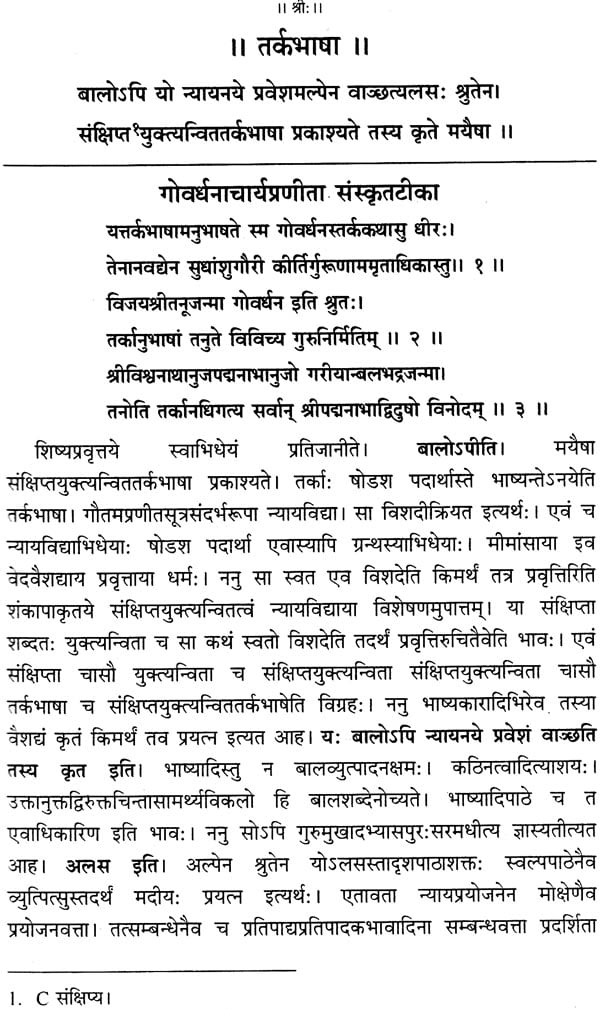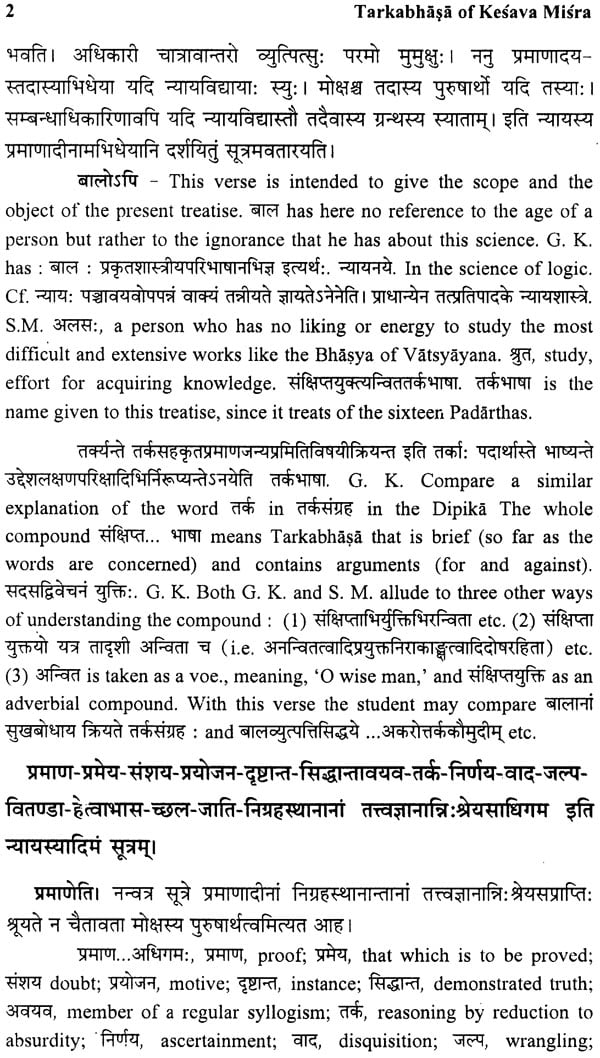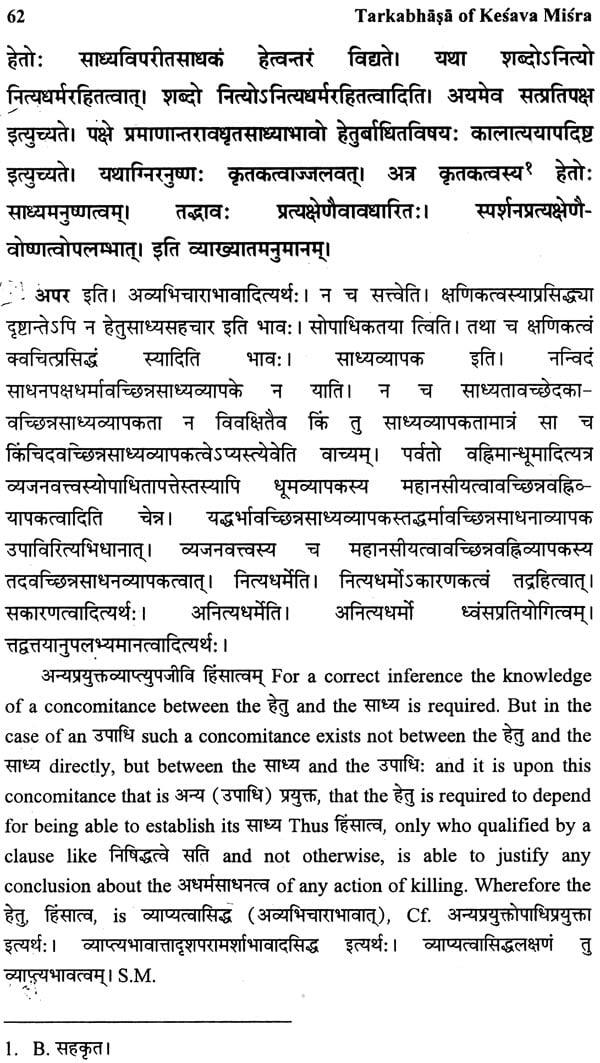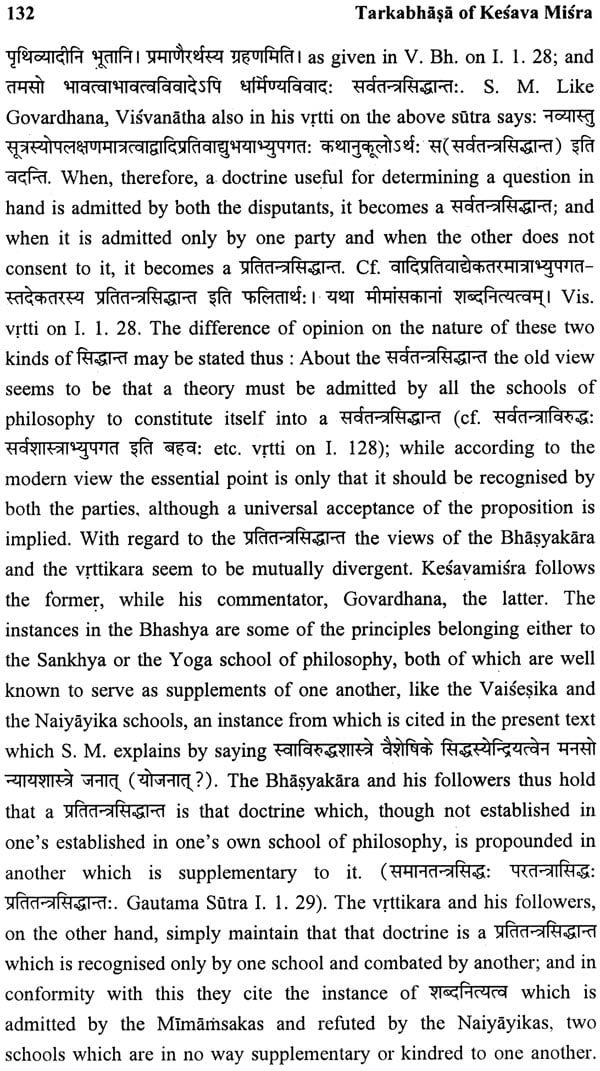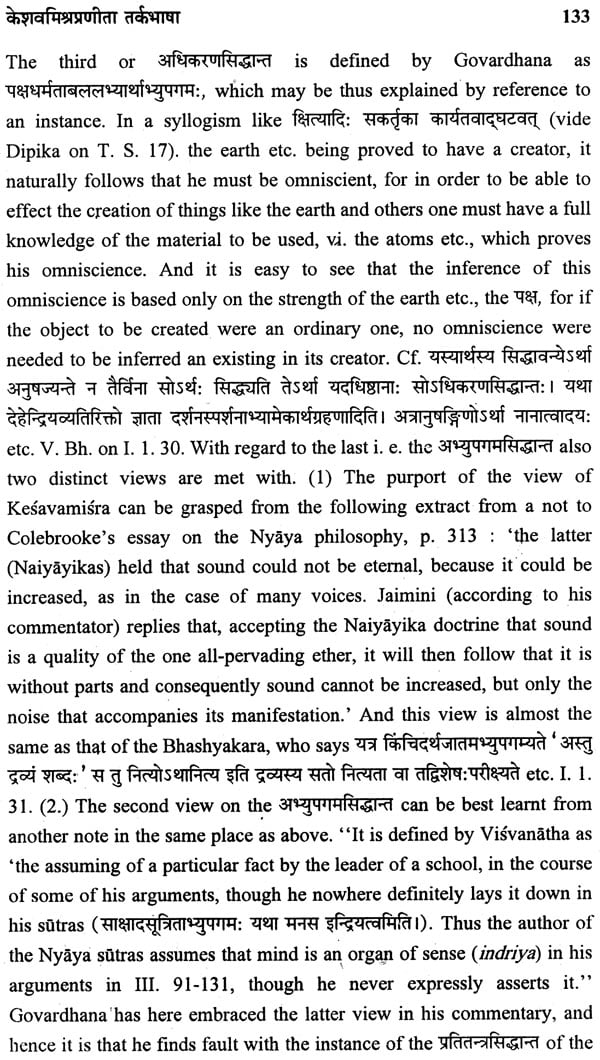
The Tarkabhasa of Kesavamisra (With The Commentary of Goverdhana and Critical & Explanatory Notes of Shivaram Mahadeo Paranjape)
Book Specification
| Item Code: | NAR865 |
| Author: | Dr. Pankaj K. Mishra |
| Publisher: | Parimal Publication Pvt. Ltd. |
| Language: | English |
| Edition: | 2005 |
| ISBN: | 9788171102624 |
| Pages: | 186 |
| Cover: | HARDCOVER |
| Other Details | 9.00 X 6.00 inch |
| Weight | 370 gm |
Book Description
The spiritual thought, in vast and vivid manner, propounded by the great Indian seers is called Darsana. At the same time Darsana also means 'vision of truth and reality.' Indian thinkers were mainly concerned with the fundamental questions of existence: what is real or reality? What is the real nature of human being? How has the world come to be? Is it created? If it is created then who is the creator? What is knowledge etc.? Basically all these questions and their answers are mere blend of all those contemporary concerns which couldn't be answered by this worldly people.
Tarkabhasa, a text, presents a detail discussion on Nyaya theory. It is known as an elementary treatise, a key for the beginners of the Science of Nyaya. It is quiet evident that Tarkabh4a is written by Kegava Migra, as mentioned at the end of the text. It presents the subject matter in an easy language.
The Tarkabhasa with the commentary of Govardhana and critical and explanatory notes of S.M. Paranjape was first published in 1894. In the present edition, the editor has given a brief introduction of the subject-matter and has put forward the useful notes of S.M. Paranjape along with the text so that the students and advanced scholars could refer to the notes directly while reading the text.
The spiritual thought, in vast and vivid manner, propounded by the great Indian seers is called Darsana. At the same time Darsana also means 'vision of truth and reality.' Indian thinkers were mainly concerned with the fundamental questions of existence : what is real or reality? What is the real nature of human being? How has the world come to be? Is it created? If it is created then who is the creator? What is knowledge etc.? Basically all these questions and their answers are mere blend of all those contemporary concerns which couldn't be answered by this worldly people.
All these thoughts are mainly divided in two parts viz. Orthodox (Astika) and Heterodox (Nastika). Here Orthodox or Astika doesn't mean that it believes in God as the creator, but, because it derives its authority in some manner from the Vedas. The following are generally regarded as orthodox systems : -
(a) Samkhya
(b) Yoga
(c) Mimamsa
(d) Vedanta
(e) Nyaya and
(f) Vaisesika
The un-orthodox or heterodox systems are : (a) Carvakism (materialistic) (b) Jainism and (c) Buddhism.
The first two are called heterodox by orthodox because they deny the authority of the Vedas and Buddhism, the later one because it ignores rather than denies Vedas.
(a) Carvaka - It is traditionally known that a thinker named Carvaka founded Indian materialism, was a prominent disciple of Brhaspati. It is also believed that the actual founder of this school was Brhaspati. This Indian materialism is also known as Lokayata, means 'the view of common folk, or 'belonging to the world of sense'.
None of the systematic works of this school is extant now, except Jayarasi's Tattvopaplavasimha. Knowledge of this unique doctrine is exclusively based on the works of other schools. We get an idea of this philosophy from Jayarasi's work, a summary of this view is given by Madhvacarya in his Sarvadarsansamgraha.
This doctrine holds that only the world (Loka) exists - there is no other reality, no future/past life. It its theory of knowledge, Carvaka denies the validity of inference and teaches that perception is the only form of valid knowledge and in consequence, matter which above can be cognized it is the only reality. Many philosophers argue that God is the creator of the Universe, at the same time the Carvaka rejects the notion of God, by saying that God, by the admission of his own advocates, is not a perceivable reality.
(b) Jainism - This most significant system of the non-traditional Indian schools has developed the ideas of the non-Vedic thinkers. It is both a philosophy and religion. the popular belief that Vardhamana was the founder of Jainism seems to be false, for according to the tradition of Jainism, Vardhamana was the twenty-fourth in a long line of Tirtharikaras.
The Jaina literature is mostly in Prakrta language. Some of the important Jaina works are Tattvarthadhigama Sutra by Umasvati, Syadvadamanjari by Mallisena, Pramana-mimamsa by Hemacandra, Prameya-kamalamarttanda by Prabhacandra and Syadvadaratnakara by Vadideva.
Jainism is the only philosophy who presents the philosophy of moral self-control. Although Jainism denies the authority of Vedas, he accepts the Vedic doctrines of salvation and liberation from the world of action is the highest ideal of life. Jainism propounds an empirical classification of the universe of things and a plurality of selves. A prominent feature of the Jaina system is its theory of knowledge with its celebrated doctrine of Anekantavada, Syadvada (conditional prediction) and Saptabhangi (seven possible stand points from which to view reality). In logic, it declares the relativity of knowledge nothing can be absolutely predicated of.
(c) Buddhism - Buddhism is a generic term for various philosophic religious, ethical and sociological forms based on the teachings of Gautama Buddha. Buddha did not write any book, but taught his doctrine through regular discourse. After his death, his disciples propagated his ideas both in India and outside. His teachings emanate from the main doctrine of the four Noble truths - there is suffering, it has a cause, the cause must be removed and the method of removal is by following the middle path. This middle path is also known as the noble eight fold path. To propagate this teaching, Buddha's essential work was to guide the way out of suffering. Therefore, his teachings lay great emphasis on the practical matters of discipline and conduct leading to liberation through non-attachment and freedom from all passions. According to him, ignorance is the root cause of suffering and it is only by removing ignorance, suffering can be removed.
After the death of Buddha, this doctrine split into two major divisions- Hinayana (Lesser-vehicle) and the Mahayana (Greater-vehicle). The first one which represents the logical development of the principals of the canonical works, developed the doctrine of the transitions of the substances and individuals. On the contrary, Mahayana, the second one, propounds a more positive philosophy that posits the reality of the Absolute. On the basis of these two major philosophical schools, four more main philosophical branches developed. These four are :
(i) The Vaibhasika (direct realism),
(ii) The Sautrantika (indirect realism)
Both belong to the Hinayana.
(iii) The Yogacara (idealism) and
(iv) The Madhyamika (relativism)
Both belong to the Mahayana.
The philosophical concept of the ancient Indian Philosophy is summerized in six main systems. They are : Samkhya, Yoga, Purva Mimamsa, Uttara Mimamsa (Vedanta), Nyaya and Vaises ika, the propounder of these are Kapila, Patanjali, Jaimini, Badarayana, Gautam or Gotam and Kanada respectively. Because of some close theoretical relation, traditionally they have been treated as three pairs of allied systems. All these systems are intended to help in the exposition and interpretations of Vedic texts which are believed to be the revelations of God and therefore infallible. Thus, they are called "Astik Darshan".
**Contents and Sample Pages**
